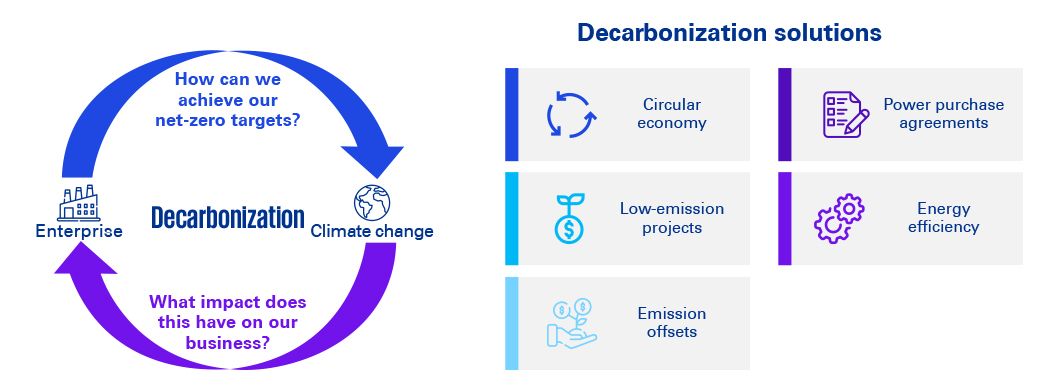The goal of a decarbonization strategy is to determine the most effective approach to reducing negative environmental impacts. A properly prepared strategy aims to reduce greenhouse gas emissions through optimization mechanisms and efficiency increases, including more efficient use of energy, switching to renewable energy sources, minimizing waste, and conscious selection of suppliers.
What is a decarbonization strategy, and why is it so important?
Achieving net-zero emissions, identified as a target for example in reports by the Intergovernmental Panel on Climate Change (IPCC), is a complex process and depends on many factors. For a decarbonization strategy supporting this aim to be achievable, it must be based on reliable data and take into account the specifics of the company and its environment.
Setting decarbonization targets is the final stage of the greenhouse gas emissions inventory. This allows the company to ensure that emissions are kept within the limits set by European Union and national legislation. The strategy also supports cost efficiencies and stimulates innovation. Setting reduction targets, and establishing a system for tracking achievement of the targets, helps ensure that they are factored in when making key decisions about goods and services provided by the company, and the materials and technologies used.
Challenges for companies in reducing negative environmental impacts
Under current laws and regulations, and under pressure from investors and customers, companies need to develop an effective decarbonization strategy to reduce their negative impact on climate and the environment. The key long-term goal is for the company to achieve net-zero emissions, analogous to the 2050 climate neutrality goal enshrined in the European Green Deal.
Actions accompanying this EU strategy, such as the EU Taxonomy, will support the flow of financial resources toward investments aimed at mitigation and adaptation to climate change. If companies postpone changes to their business model, they face a growing risk to securing the financing they need for investment, and to maintaining relationships with contractors who are more aware of climate challenges.
What will you gain by applying an optimal decarbonization strategy in your company?
Meeting regulatory requirements
With entry into force of the EU’s Fit for 55 package and the EU Taxonomy, companies will have to demonstrate that they are implementing a strategy to decarbonize their operations, and carry out periodic emissions reviews (in compliance with the latest guidelines).
Long-term strategy
Including emerging market opportunities related to decarbonization in the company’s long-term strategy will increase its resilience to financial and legislative risks.
Meeting stakeholder demands
Presenting a decarbonization plan to customers and investors in line with the goals of the Paris Agreement will give businesses a competitive advantage.
Access to green finance
Companies eligible for the new pool of government and EU funds, as well as green loans and bonds, can lower their costs of raising capital.
KPMG’s support in developing a decarbonization strategy
Based on the data provided and an analysis of the specifics of the industry, KPMG experts will identify which of the tools for building a decarbonization strategy will be optimal for your company.

Key questions that KPMG experts will explore when developing a decarbonization strategy:

Creating a decarbonization plan allows for:
1 Planning how to cost-effectively achieve climate neutrality.
2 Critical review of technologies and solutions for reducing the environmental impact of business operations in terms of capital expenditures and operating costs.
3 Identification of the main risks associated with existing or proposed technologies and investments, and assessment of their operation in the local context.
4 Identification and evaluation of available solutions (including power purchase agreements ), market suppliers, and supply chain implementation models.
5 Development of a robust and dynamic financial model, taking into account all options and climate-related and financial risks. Management of programme implementation.
6 Setting targets and determining the achieved emission reductions.
About us
At KPMG, we focus on innovative solutions, tailored to the specifics and needs of the client. Drawing on the experience of KPMG’s global network of experts, we effectively adapt innovative ideas and implementations to Polish conditions.
See more
Submit request for proposal (RFP)
Learn more about how KPMG knowledge and technology can help your business.
Click to start





